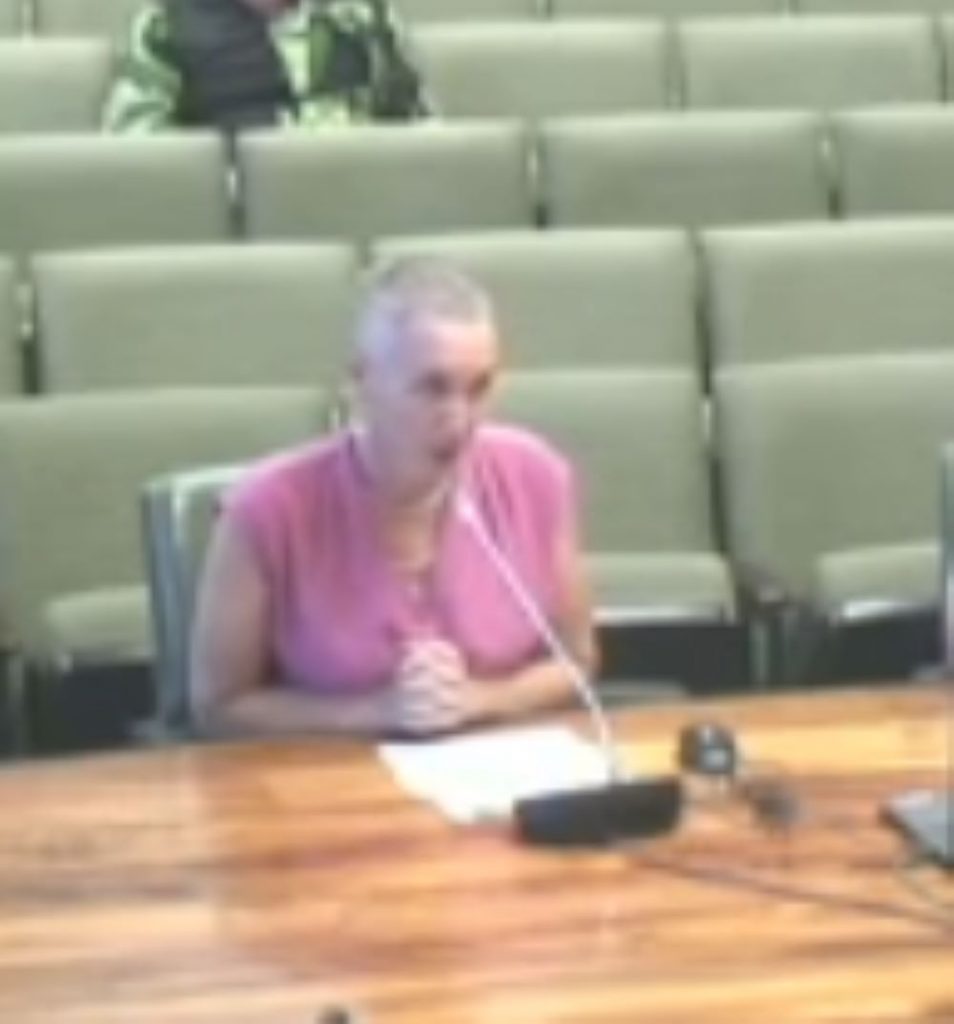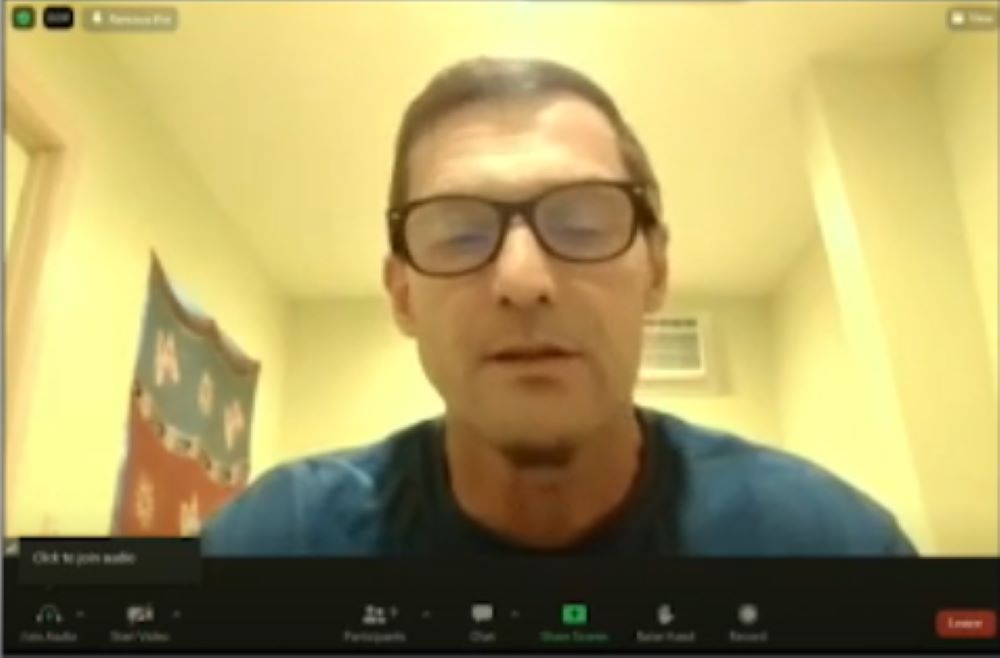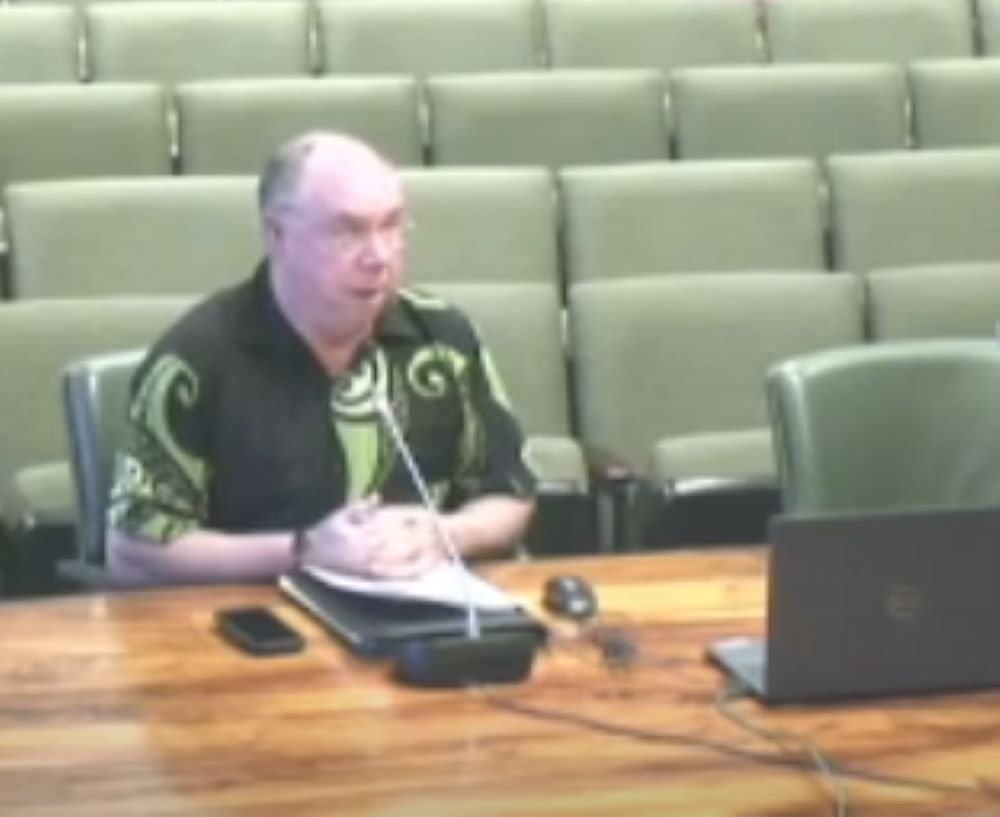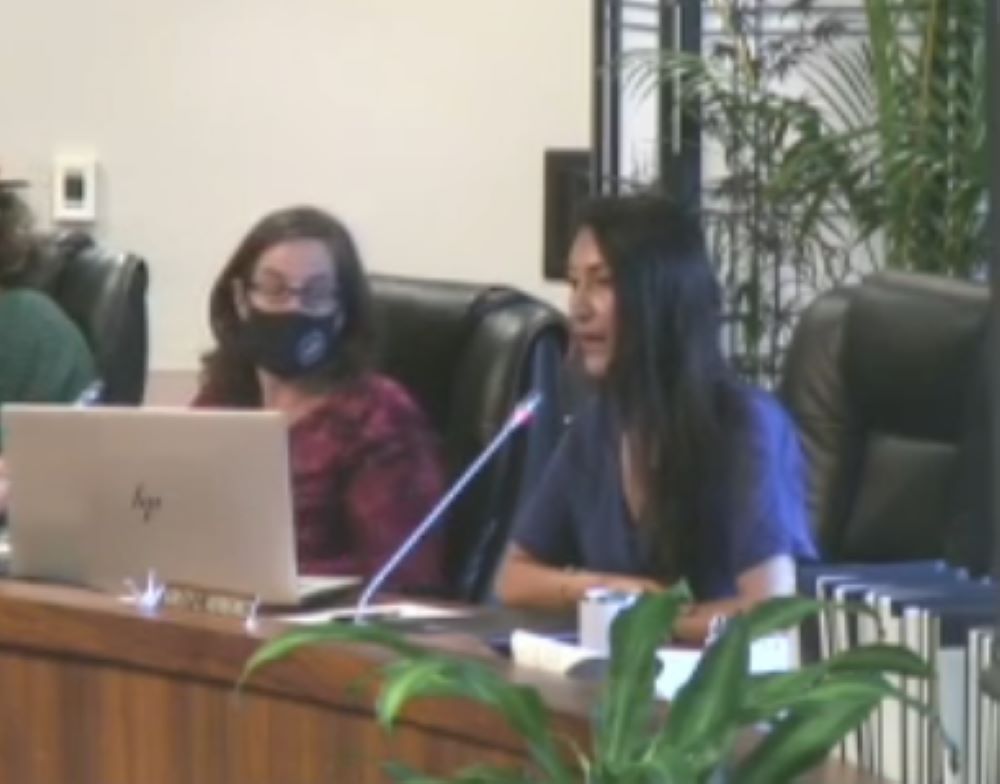Cyclists Plead for Bike Lanes as Part of Waiānuenue Avenue Project
The Hawai‘i County Council Committee on Public Works and Mass Transit is expected to get an update Tuesday, July 19, regarding the rehabilitation project for Waiānuenue Avenue in Hilo.
The committee meets at 1 p.m. Tuesday at the West Hawai‘i Civic Center in Kona.
It will be the second time this month the update will be the only item on the committee’s agenda. Chairwoman Sue Lee Loy asked the county’s interim Department of Public Works director, Steven Pause, to appear during the committee’s July 5 meeting to update members on the project; however, he was sick and unable to attend.
So the committee postponed the update two weeks.
Several community members testified in person or via Zoom during the July 5 meeting and about a dozen written testimonies were submitted online in regard to the update. The testifiers expressed support for putting bike lanes on Waiānuenue as part of the rehabilitation project, but also spoke about what seems to a long-standing disregard by DPW of community input and adhering to policies in place that encourage multi-modal transportation on not just Waiānuenue but other road projects.
“Communities know what is needed to make the roads they travel safer: more connected bike, pedestrian and other multi-modal facilities; road diets, which mean narrower lanes and slower speeds,” Jessica Thompson, executive director of People for Active Transportation Hawai‘i, or PATH, testified during the July 5 committee meeting. “As of this date, none of the recent road improvements have included connected bikeways or road diets outlined in the Complete Streets road design manual, the transit and multi-modal master plan or the Vision Zero master plan. In fact, the recent Kīlauea, Waiānuenue and Ali‘i Drive resurfacing projects did not have any connected striping for bicyclists or transparent community engagement.”
She’s still waiting for public announcements regarding community input on Kalanianaʻole Street pedestrian and bicycle facilities and said it’s also not too late for those improvements, as well as those on Waiānuenue and Keawe Street in Hilo, to reflect the values and protocols outlined in the Complete Streets and Vision Zero frameworks.
Thompson added that there is an urgent need to implement Hawai‘i County’s Complete Streets manual and Vision Zero action plan, both of which address transparency and community engagement as focal points.
The state passed a law in 2009 requiring all counties and the state Department of Transportation to adopt a Complete Streets policy. According to the U.S. Department of Transportation, Complete Streets policies support planners and engineers in developing roadway designs that improve the safety of all users and provide additional opportunities for physical activity via transportation.
The county adopted its Vision Zero action plan in 2019. It seeks to eliminate all traffic fatalities and severe injuries while increasing safe, healthy and equitable mobility for all.
“To be clear, we have repeatedly asked for Complete Streets and Vision Zero master plans to be implemented,” Thompson told the committee. “Leadership at the County of Hawai‘i has been receptive to the ideas; however, when the rubber meets the road, or paint meets the road in this case, it continues to be business as usual.”
She does, however, still think change that leads to the implementation of the vision adopted by the county’s elected officials and community is possible.
The other testifiers echoed Thompson’s comments. It boils down to safety and providing multi-modal means of transportation for the community.
“I’m just pleading for you to try to consider everybody using the roads on our island, especially when projects are going forward,” JB Friday, who lives on Waiānuenue Avenue and is a regular bike commuter, adding that the decisions made now will impact the island for decades.



Amy Self, treasurer of the Hilo Bayfront Trails organization and vice chairperson of the county Ethics Board who was testifying on her own behalf via Zoom during the July 5 committee meeting, said she never imagined after retiring from the county three years ago she’d find herself back before the council.
“I thought I’d never have to deal with council or anything else again, but here I am,” she said. “I’ve been riding a bike without training wheels since I was 5 years old and I am 65 years old now, so I’ve been riding a bicycle for 60 years. I think you can understand why this particular issue is so important to me.”
But it’s not about her.
“This is about a road that goes between three schools. With no traffic slowing devices and speed limit of 30 and then it turns to 25 as you get closer to town and no bike lanes,” Self told the committee, adding when she learned about the Waiānuenue Avenue project she was told it would include bike lanes. “When I found out that it wasn’t going to have bike lanes, I went ballistic.”
She’s had at least three meetings with DPW engineers, but to no avail.
“I just can’t understand why the DPW engineers are so against Complete Streets,” Self said.
She’s not giving up on the policy and doesn’t think the council should either.
“The Waiānuenue Avenue widening project needs to accommodate bicyclists on this project, thus fulfilling previous obligations to Hilo’s cycling community,” Chris Seymour, owner of Hilo Bike Hub, testified via Zoom during the July 5 meeting. “Many new professionals, such as doctors, therapists, social workers, already use this road to commute to work. Without a bicycle lane on Waiānuenue, these professionals would be put at great, unnecessary risk by a hasty decision by our county’s DPW. This jeopardizes our community’s ability to draw qualified, healthy workers to our already strained work force.”
He said Waiānuenue is a main connector in the community, used by people to travel to residences and destinations such as Hilo Medical Center, hospice and other businesses as well as to Hilo Union, Hilo Intermediate and Hilo High schools. If the roadway doesn’t include bicycle lanes, Hilo High School would be the only high school on the island that doesn’t have a bicycle lane corridor connecting it to the rest of the community.
“We will continue to see much higher numbers of new bicycles on our roadways — 6,000 new bicycles annually are registered with the Hawai‘i County (Department of Motor Vehicles),” Seymour said. “Let’s make room for our neighbors on bicycles, our kupuna and our keiki. But most of all, let’s keep our commitment to policy that has already been decided and make our community even safer and healthier.”
Another testifier said the county still falls far behind the rest of the state when it comes to residents feeling they have access to infrastructure to safely be physically active. She said only about a third of the island’s residents feel they can be safely active outdoors compared to 90% of residents throughout the rest of the state.
One testifier said she wouldn’t allow her 16-year-old son ride to school on Waiānuenue Avenue because of safety concerns. She added that the county needs to look at making Complete Streets part of every road project and provide safe routes to school for all keiki.

County Managing Director Lee Lord was in attendance at the July 5 committee meeting. He told members that Pause and Mayor Mitch Roth are committed to Complete Streets design and the Vision Zero plan. Roth on June 13 signed a proclamation to embrace Complete Streets designs.
“I know there’s already been talks started about Waiānuenue, but also to look at Kalanianaʻole and Keawe,” Lord said, adding that more information should be available by the committee’s next meeting Tuesday.
Lee Loy said she heard one thing loud and clear from those who testified and submitted written testimony: they want an opportunity to be at the table and discuss opportunities to integrate Complete Streets and some of their ideas.
“If you could please, between now and our next meeting, commit to these individuals a time at which they can sit down and just have this conversation, it’s my hope that when we bring it back up in two weeks that that meeting would have occurred and some solutions and some collaboration will have happened so that the community knows that we’re listening,” she told Lord.
Councilwoman Ashley Kierkiewicz said the committee needs to understand why the Complete Streets and Vision Zero policies are not being implemented.
“We’re not adopting these policies, issuing proclamations to feel good,” Kierkiewicz said. “We’re doing them because we believe this is the best thing for our community. So with so much time having passed, seeing the missed opportunity on Kīlauea Avenue, we really need to understand who was in charge of making decisions to disregard these policies and why.”

She also wants to understand the kind of training on Complete Streets and Vision Zero done within DPW and whether the department’s staff understands how to use those tools when they are designing road projects.
“I think it’s important to know so that we can course correct appropriately and design with these principles in mind,” Kierkiewicz said.
Councilwoman Heather Kimball wants to know what the options are moving forward, not just on Waiānuenue Avenue but other future road projects.
“Whether you call it Complete Streets or call it something else, having multi-modal transportation has a variety of benefits in terms of health, in terms of building community and in terms of economic benefit as well,” Kimball said.
She’s had conversations with Pause and DPW’s former director, Ikaika Rodenhurst, about the county acquiring Route 240 in her district and creating a corridor plan with multi-modal transportation included for that roadway. She found broad support for that if the county were to take over the roadway, so she knows there’s an understanding for the need and effort.
Kimball hopes there are still some options to pivot with respect to Waiānuenue and other roadway projects in progress and in the future.
“It’s really juts a matter of getting everybody on board,” she said.
Sponsored Content
Comments









